
At its best, thick, curly hair can look eclectic, daring or cutesy. On its worst day, curly hair morphs into a frizzy tangle monster. All curly heads want to avoid the latter, and knowing the difference between coarse and curly hair will have you well on your way to a head of enviable locks.
All About Texture
It's a common misconception that hair has to be either coarse or curly. Truth is, hair can be both. Hair's texture refers to the thickness of the strand and not how the hair feels to the touch. There are three main types of hair texture: fine, medium, and thick or coarse. To determine your texture, use the thread test. Compare a piece of sewing thread and a strand of hair. If the hair strand is thinner than the thread, it is fine. The same thickness as the thread indicates medium strands, while hair that is thicker than the thread is defined as coarse.
Hair Type Hype
Hair type describes whether your hair is straight, wavy, curly or kinky-coily. Hair type is entirely independent of the fine, medium or coarse hair texture. Hair that's straight as a board can be coarse -- read: thick -- while the tightest curl pattern can be found on fine strands. Curly hair bends and turns along the entire length of the strand and can take on several patterns, such as spiral, corkscrew and coily -- all on the same head of hair.
Coarse Hair Course
Coarse hair gets a bad rap. Coarse hair simply means thicker strands, and most people want thick, luscious hair. Hair-care companies market products promising thicker, stronger hair which is all coarse hair really is. Hair that feels rough or hard to the touch may be damaged or dry. When coarse hair is properly maintained, it can be just as soft and moisturized as thinner strands. Coarse hair is the strongest of all hair types, because, unlike fine or sometimes medium hair, it contains all three layers of the hair shaft -- cortex, cuticle and medulla. Thick hair holds styles well and can be more heat-tolerant than its thinner counterparts. But it takes more effort to get it to shine, and coarse hair can be more resistant to certain chemical processes.
Tame Those Curls
Curly hair may look bold and fierce, but it's actually quite fragile. Curly hair, whether fine, medium or coarse, is more prone to breakage than straight or wavy. Every point where curly hair bends or twists is a weak point in the strand, so being gentle with curly locks is the best way to tame your mane. Curly hair has the tendency to be dry, frizzy and prone to tangles if not cared for properly; find the optimal balance of moisture and protein to guarantee your curly hair's success. Avoid brushing or combing curly hair when it's dry, and deep condition to hydrate your locks. Sleeping with a satin scarf or pillowcase on your head helps keep tangles and fairy knots at bay while maintaining moisture levels.
Related Articles
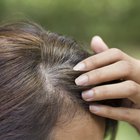
What is Hair Composed of?

Synthetic Hair Vs. Kanekalon Hair
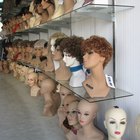
Types of Synthetic Hair

How to Manage Thick, Coarse ...
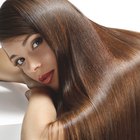
Keratin Hair Treatment Ingredients

How to Take Care of Yaki Hair

What Is Synthetic Hair Made Of?

How to Tell if Hair Is a Weave

What Is a Capless Wig?

What Is the Best Shampoo for a Hair ...

Lactic Acid in Hair

Chi Hair Treatment

How to Keep a Ponytail in All Day

Pantene Shampoo Information

What Is the Difference Between Cutting ...
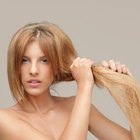
How to Get Rid of Frizzy Straight Hair

Serum Vs. Gel
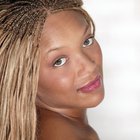
The Best Kinds of Synthetic, ...
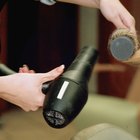
What Is a Rat Hair Piece?

How Are Hair Colors Inherited?
References
Writer Bio
Tara Thomas has been a writer and traveler since 1997. Her articles appear in various online publications. She also has experience authoring grant proposals for a Southern California marine science laboratory, which helped her develop a lifelong interest in environmentalism. Thomas is an event planner, has a Bachelor of Science in marine biology from California State University, Long Beach, and worked as a mortgage consultant since 1998.
Photo Credits
Stockbyte/Stockbyte/Getty Images